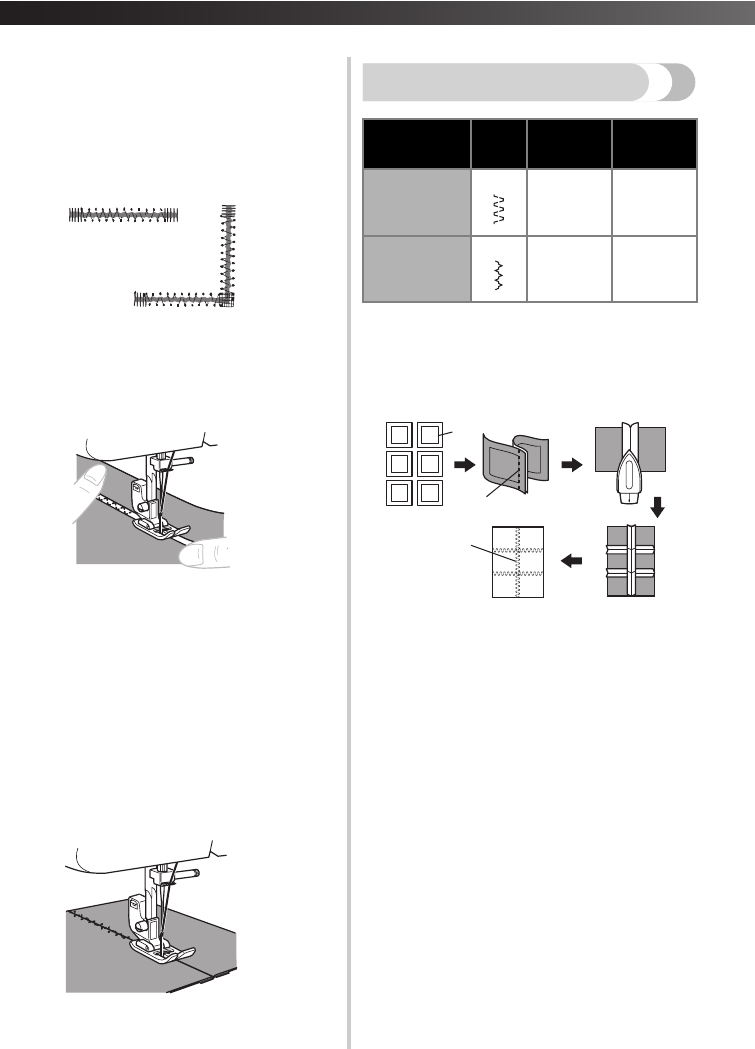
BUILT-IN STITCHES ————————————————————————————————————————————————————————————————————————————————————————————————————————————————————————————————
—
——————————————————————————————————————————————————————————————————————————————————————————
—————
25
■ Mending
1
Place the reinforcement fabric under the
area you want to mend.
• Use the basting pins to hold the
reinforcement fabric.
2
Following the line of the tear, sew using
the Elastic Stitch as shown.
■ Sewing elastic
1
Pin the elastic tape to the wrong side of
the fabric.
2
As you sew, stretch the elastic in front of
and behind the presser foot.
■ Joining fabric
You can use the Elastic Stitch to join two pieces of
fabric together and it is very effective when sewing
knitted fabrics. If you are using nylon thread, the
stitch will not be visible.
1
Put the edge of the two pieces of fabric
together and center them under the
presser foot.
2
Sew them together using the Elastic Stitch.
Make sure you keep the two fabric edges
close together.
• Use the basting pins to hold the two fabric
edges close together.
Double action stitching
*
Stitch nos. 16-17 are only available on certain models
.
These stitches are used for joining two pieces of fabric,
such as when making patchwork.
Example: Patchwork with Double Action Stitch
1 Desired seamline
2 Straight Stitch
3 Double Action Stitch
Stitch Name Pattern
Stitch
Length
[mm (inch)]
Stitch Width
[mm (inch)]
Double Action
Stitch
1.2 (1/16) 5 (3/16)
Bridging Stitch 1.2 (1/16) 5 (3/16)
16
17
1
2
3


















